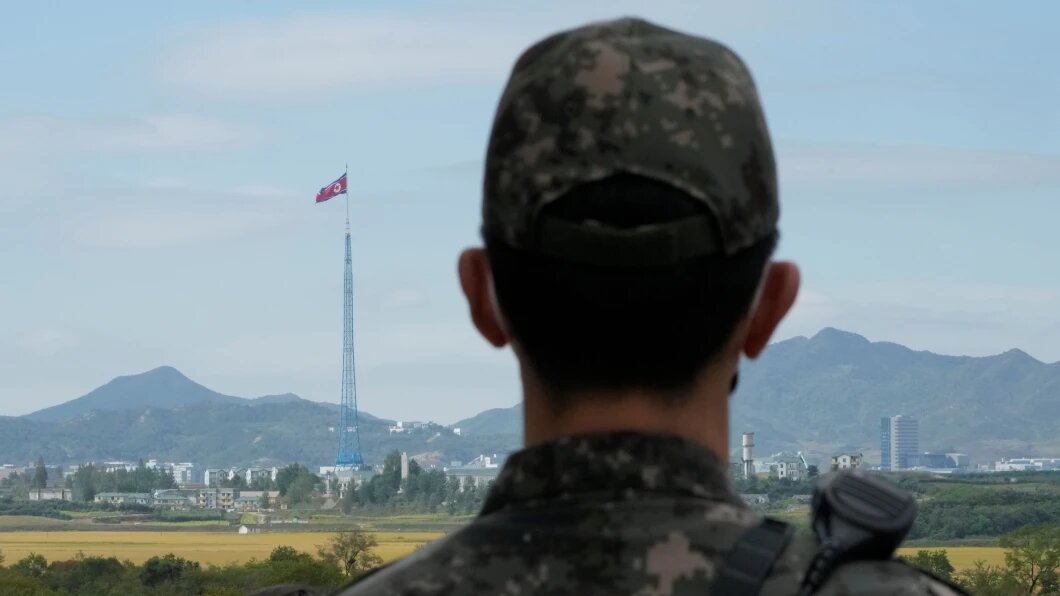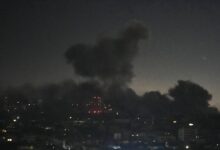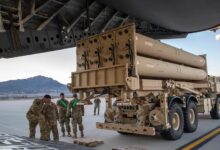US Sends Carrier As North Korea Tests 2 More Missiles

- The problem is that Pyongyang can improve its technology and nuclear weapons, which threaten South Korea and Japan, by continuing to test.
- The air force said that the goal of the exercise was to test the precision strike capabilities and reaffirm the credibility of Seoul's "three-axis" strategy for dealing with North Korean nuclear threats.
A nuclear-powered U.S. aircraft carrier and its battle group started training with South Korean warships just hours after North Korea fired two short-range ballistic missiles in an apparent protest of the allies’ growing drills.
Fighter jets took off from the USS Nimitz as the nuclear-powered U.S. aircraft carrier and its battle group began exercises with South Korean warships on Monday, just hours after North Korea fired two short-range ballistic missiles in what seemed to be a protest of the allies’ growing drills.
The seventh missile test this month showed that tensions in the area are getting worse as both the North’s weapons tests and the U.S. and South Korea’s joint military exercises get bigger.
The launches may have been timed to coincide with the arrival of the USS Nimitz and its strike group, which included a guided missile cruiser and two destroyers. They took part in air defense exercises and other drills with South Korean warships in the waters near Jeju island.
Jang Do Young, a spokesman for the South Korean navy, said that the drills were meant to improve joint operational capabilities and show that the U.S. was committed to defending its ally with all options, including nuclear, in the face of “escalating nuclear and missile threats” from the North.
The Nimitz strike group was supposed to arrive at the port of Busan on the South Korean mainland on Tuesday.
The commander of Carrier Strike Group Eleven, Rear Adm. Christopher Sweeney, said, “Every day, the United States has deployable strategic assets ready to go.” “We can keep putting those assets to use, and we will.”
South Korea’s Joint Chiefs of Staff said that the two North Korean missiles were launched from a western inland area south of Pyongyang between 7:47 and 8 a.m. and went about 370 kilometers (229 miles) before landing in the sea. The missiles landed outside of Japan’s exclusive economic zone, and the Japanese military said they flew in a strange way and got as high as 50 kilometers (31 miles).
Japan has said similar things about a North Korean solid-fuel missile that seems to be based on Russia’s Iskander mobile ballistic system. This system is made to be maneuverable at low altitudes so that it can avoid South Korean missile defenses better. North Korea also has another short-range system that is similar to the MGM-140 Army Tactical Missile System in the United States.
Hirokazu Matsuno, the head of Japan’s Cabinet, said that North Korea could step up its testing by launching more missiles or even doing its first nuclear test since September 2017.
The South Korean and Japanese militaries said that the latest launches were a serious threat to peace in the area and that they were working with the U.S. to find out more about the missiles. The U.S. Indo Pacific Command said that the launches did not pose an immediate threat to the U.S. or its allies, but they did show the “destabilizing impact” of North Korea’s illegal nuclear weapons and missile programs.
North Korea didn’t say anything right away about the launches. Since 2016, the U.N. Security Council has put more pressure on North Korea because of its nuclear development.
Last week, the United States and South Korea finished their biggest springtime drills in years. These drills included both computer simulations and real-life fire on the field. But the allies have kept training on the field as a show of strength against the growing threats from the North.
North Korea also fired a short-range missile when the USS Ronald Reagan and its battle group arrived in September for joint drills with South Korea. This was the last time the US sent an aircraft carrier to waters near the Korean Peninsula.
North Korea has launched more than 20 ballistic and cruise missiles on 11 occasions this year. It is trying to force the United States to accept that it is a nuclear power and remove sanctions from a position of strength.
This month, North Korea tested an intercontinental ballistic missile and a number of short-range missiles that were meant to overwhelm South Korea’s defenses. North Korea is trying to show that it can launch nuclear attacks on both South Korea and the U.S. mainland.
The North did what it said was a three-day drill last week that was a simulation of a nuclear attack on South Korean targets.
Kim Jong Un, the leader of North Korea, has said that the joint military drills between the U.S. and South Korea are just practice for an invasion. The exercises, say the allies, are for defense.
The tests also included what the North said was a nuclear-capable underwater drone that can cause a huge “radioactive tsunami” that can destroy naval ships and ports. Analysts weren’t sure if such a device was a big new threat, and Seoul’s Joint Chiefs of Staff said in a statement on Monday that they think North Korea’s claims are likely “overstated and made up.”
North Korea said that some of the ballistic and cruise missiles it tested this month were equipped with fake nuclear warheads that went off 600 to 800 meters (1,960 to 2,600 feet) above their sea targets, which it said would cause the most damage.
North Korea has already set a record for the most weapons tests in one year. In 2022, they fired off more than 70 missiles. It had made a law about an escalating nuclear doctrine that allows pre-emptive nuclear strikes in a wide range of situations where it might think its leadership is in danger.
A senior analyst at the Center for a New American Security, Duyeon Kim, said, “It looks like North Korea might be practicing or sending signals that it is practicing the use of nuclear strikes, both preemptive and retaliatory, in a range of scenarios that are allowed in its nuclear doctrine.”
“The problem is that Pyongyang can improve its technology and nuclear weapons, which threaten South Korea and Japan, by continuing to test. This makes it more likely that Pyongyang will make a mistake that could lead to an accidently started war, and it gives Pyongyang more political power ahead of future diplomatic talks with Washington.”
After the North announced the drone test on Friday, South Korea’s air force released information about a five-day joint drill with the US last week that included live-fire demonstrations of air-to-air and air-to-ground weapons.
The air force said that the goal of the exercise was to test the precision strike capabilities and reaffirm the credibility of Seoul’s “three-axis” strategy for dealing with North Korean nuclear threats. This strategy involves striking potential attack sources before they happen, stopping incoming missiles, and taking out the North’s leadership and key military facilities.







Facebook Comments